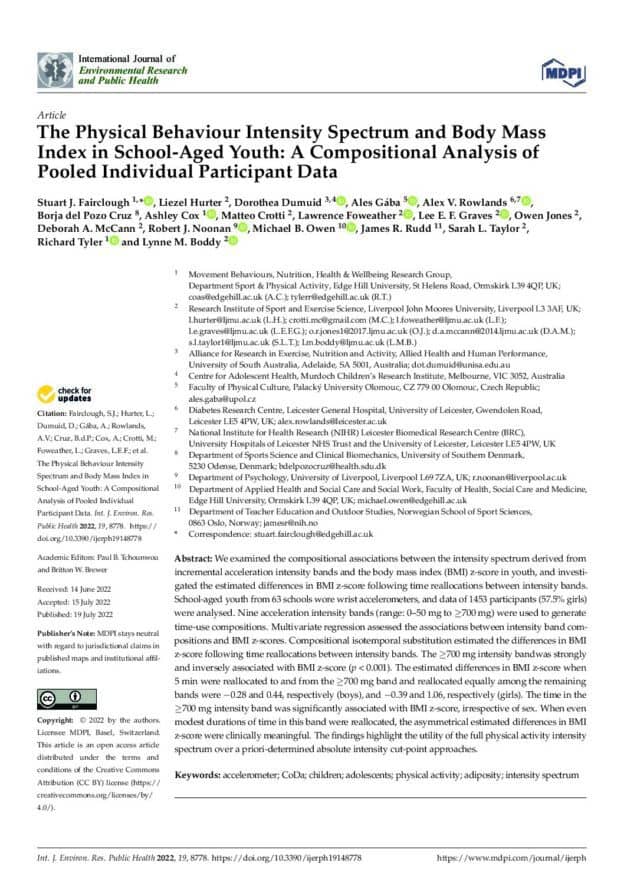Abstract
We examined the compositional associations between the intensity spectrum derived from incremental acceleration intensity bands and the body mass index (BMI) z-score in youth, and investigated the estimated differences in BMI z-score following time reallocations between intensity bands. School-aged youth from 63 schools wore wrist accelerometers, and data of 1453 participants (57.5% girls) were analysed.
Nine acceleration intensity bands (range: 0–50 mg to ≥700 mg) were used to generate time-use compositions. Multivariate regression assessed the associations between intensity band compositions and BMI z-scores. Compositional isotemporal substitution estimated the differences in BMI z-score following time reallocations between intensity bands.
The ≥700 mg intensity band was strongly and inversely associated with BMI z-score (p < 0.001). The estimated differences in BMI z-score when 5 min were reallocated to and from the ≥700 mg band and reallocated equally among the remaining bands were −0.28 and 0.44, respectively (boys), and −0.39 and 1.06, respectively (girls). The time in the ≥700 mg intensity band was significantly associated with BMI z-score, irrespective of sex.
When even modest durations of time in this band were reallocated, the asymmetrical estimated differences in BMI z-score were clinically meaningful. The findings highlight the utility of the full physical activity intensity spectrum over a priori-determined absolute intensity cut-point approaches.



Responses